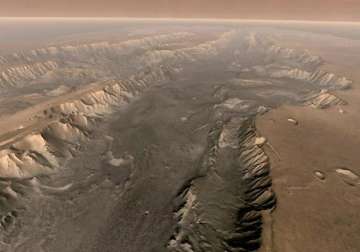Washington: The Curiosity rover has found evidence of an ancient lake on Mars that millions of years ago could have sustained life for long periods of time, NASA said.
"Quite honestly, it just looks very Earth-like," the lead scientist of the Curiosity mission, John Grotzinger of the California Institute of Technology, said.
Meanwhile another team of NASA scientists said that, according to observations and measurements made by Curiosity, the risk of exposure to cosmic radiation should not be an obstacle for manned missions to Mars in the future.
The instruments on Curiosity - a robotic rover that landed on Mars August 6, 2012 - have compiled data enabling calculations that show this shallow fresh-water lake to have existed 3.7 million years ago.
The scientists take this as evidence that inhabitable environments could have existed on Mars much earlier than generally believed up to now.
A research team from NASA's Mars Science Laboratory and Imperial College London have analysed samples of sedimentary rocks known as mudstones in a place called Yellowknife Bay in Gale Crater where the rover landed, near the Mars equator.
The mudstones show that Gale Crater, a basin 150 km in diameter, held a lake some 3.7 million years ago. The scientists believe the lake could have existed for tens or hundreds of thousands of years.
Latest World News
